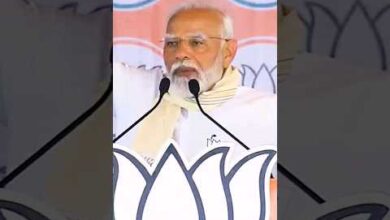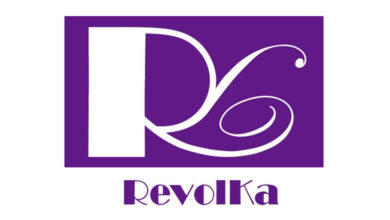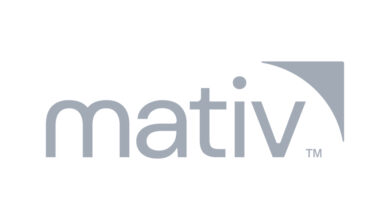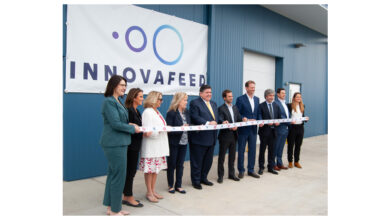Global Automotive Lightweight Materials Market Report 2022 to 2027: Industry Trends, Share, Size, Growth, Opportunities and Forecasts – ResearchAndMarkets.com

DUBLIN–(BUSINESS WIRE)–The “Automotive Lightweight Materials Market: Global Industry Trends, Share, Size, Growth, Opportunity and Forecast 2022-2027” report has been added to ResearchAndMarkets.com’s offering.
The global automotive lightweight materials market size reached US$ 67.2 Billion in 2021. Looking forward, the publisher expects the market to reach US$ 107.0 Billion by 2027, exhibiting a CAGR of 8.06% during 2021-2027.
Companies Mentioned
- BASF SE
- Magna International
- Toray Industries
- Covestro AG
- ArcelorMittal
- thyssenkrupp AG
- Alcoa Corporation
- Bayer AG
- Saudi Arabia Basic Industries Corporation (SABIC)
- PPG Industries
- LyondellBasell
- Novelis
- Owens Corning Corporation
- Grupo Antolin
Keeping in mind the uncertainties of COVID-19, we are continuously tracking and evaluating the direct as well as the indirect influence of the pandemic. These insights are included in the report as a major market contributor.
Automotive lightweight materials are primarily used for replacing cast iron and conventional steel components in different types of vehicles such as electric, plug-in and hybrid electric vehicles. They are used in structural elements which enable vehicles to carry advanced safety devices, integrated electronic systems and emission control systems.
The usage of lightweight materials in automobiles offsets the weight of their power systems like electric motors and batteries while improving the efficiency and increasing their all-electric range. Some of the most popular lightweight materials used in the automotive industry include high-strength steel, aluminum alloys, polymer composites, carbon fiber, magnesium alloys, etc.
With rapid environmental degradation, automotive companies across the globe are developing lighter and functional materials for improving the fuel efficiency of vehicles. The usage of lightweight materials enables manufacturers to improve vehicle efficiency, as a reduction in the weight of a car leads to significant improvement in fuel economy.
Consequently, the increasing fuel prices are driving the demand for lighter vehicles. Other than this, governments of various nations have also introduced vehicle weight reduction plans in response to the need for stringent environmental regulations. Furthermore, there has been a rise in investments in R&D activities across the industry as several major players are aiming to lower the cost of these materials and increase their recyclability.
Key Market Segmentation:
The publisher provides an analysis of the key trends in each sub-segment of the global automotive lightweight materials market report, along with forecasts at the global and regional level from 2022-2027. Our report has categorized the market based on material type, propulsion type, component, application and vehicle type.
Breakup by Material Type:
- Metal
- High Strength Steel (HSS)
- Aluminum
- Magnesium & Titanium
- Composite
- Carbon Fiber Reinforced Polymer (CFPR)
- Glass Fiber Reinforced Polymer (GFRP)
- Natural Fiber Reinforced Polymer (NFRP)
- Other Composites
- Plastic
- Elastomer
Breakup by Propulsion Type:
- IC Engine Powered
- Electric Powered
- Others
Breakup by Component:
- Frame
- Wheel
- Bumper
- Door and Seat
- Instrument Panel
- Others
Breakup by Application:
- Structural
- Interior
- Exterior
- Powertrain
- Others
Breakup by Vehicle Type:
- Passenger Vehicle
- Light Commercial Vehicle (LCV)
- Heavy Commercial Vehicle (HCV)
Breakup by Region:
- North America
- Europe
- Asia Pacific
- Middle East and Africa
- Latin America
Key Questions Answered in This Report:
- How has the global automotive lightweight materials market performed so far and how will it perform in the coming years?
- What are the key regional markets in the global automotive lightweight materials industry?
- What has been the impact of COVID-19 on the global automotive lightweight materials industry?
- What is the breakup of the market based on the material type?
- What is the breakup of the market based on the propulsion type?
- What is the breakup of the market based on the component type?
- What is the breakup of the market based on the application?
- What is the breakup of the market based on the vehicle type?
- What are the various stages in the value chain of the global automotive lightweight materials industry?
- What are the key driving factors and challenges in the global automotive lightweight materials industry?
- What is the structure of the global automotive lightweight materials industry and who are the key players?
- What is the degree of competition in the global automotive lightweight materials industry?
For more information about this report visit https://www.researchandmarkets.com/r/wzi663
Contacts
ResearchAndMarkets.com
Laura Wood, Senior Press Manager
[email protected]
For E.S.T Office Hours Call 1-917-300-0470
For U.S./ CAN Toll Free Call 1-800-526-8630
For GMT Office Hours Call +353-1-416-8900





